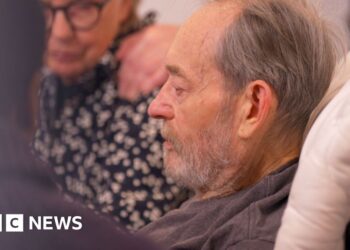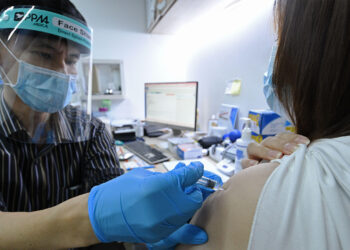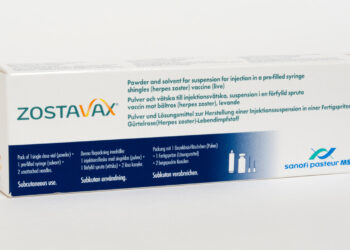LOS ANGELES — For surgeons already split on their preference of inhaled pulmonary vasodilator to prevent postoperative right ventricular (RV) failure, a shifting market is not helping decision-making, as highlighted by a debate here at the Society of Thoracic Surgeons (STS) annual meeting.
Between nitric oxide and epoprostenol, “it’s hard to argue that one agent is better than the other in terms of physiological or clinical outcomes … I think the real conundrum that typically hospitals have is [cost],” said Subhasis Chatterjee, MD, of Baylor College of Medicine in Houston. Chatterjee stood in for Vikram Fielding-Singh, MD, JD, of Stanford University in California, who was scheduled but unable to argue the pro-nitric oxide side in person at STS.
Inhaled nitric oxide and epoprostenol have both been used prophylactically and therapeutically for years to reduce RV afterload after cardiac surgery; both also increase RV stroke volume and cardiac output. In the blinded INSPIRE-FLO trial, both worked similarly in preventing postoperative RV failure after major cardiac surgery for advanced heart failure, suggesting price may be the deciding factor for centers, with epoprostenol, a synthetic prostacyclin, typically seen as more economical.
But how expensive is nitric oxide really?
“There are a lot more drug delivery systems now on the market, more in development. At our own institution, we had four different nitric oxide vendors, and at the end of the day, we went with nitric oxide because the net cost that we were charged was pretty similar whether we used nitric oxide or epoprostenol,” Chatterjee said.
With price comparable between the two treatments, Chatterjee’s arguments in favor of nitric oxide include its consistent delivery, reliability, and safety. He contrasted this to the delivery of epoprostenol, which lacks specific guidance from the manufacturers and requires vibrating nebulizers that contribute to interruptions in therapy.
Also, aerosolized epoprostenol may not be compatible with common ventilator settings: “You can actually end up with disruptions in delivery without the alarms of pressurization that you’d see in a normal ventilator circuit,” he stated.
At the beginning of the STS session, an informal audience poll suggested more prostacyclin users in the room at a 60-40 show of hands.
“Cost still pretty much favors the prostacyclin,” observed Kamrouz Ghadimi, MD MHSc, of Duke University School of Medicine in Durham, North Carolina, who held the pro-prostacyclin position of the debate. “Although markets may shift over time, as markets usually do.”
Ghadimi, the lead author of INSPIRE-FLO, pointed out there is still a risk of methemoglobinemia with nitric oxide.
On the other hand, acknowledging the need for “really clear protocols” with epoprostenol, he told the audience “you’ll see that for the most part, most institutions do follow those protocols, particularly when it comes to filter placement, avoiding hygroscopic filters where fluid can actually accumulate, and then making sure that you’re changing out your filters every 4 to 6 hours, which respiratory therapists do very well.”
“It’ll be [idealistic] and naive to think that the health system isn’t putting some sort of pressure on you to act accordingly in terms of being cost-efficient about your care,” said Ghadimi. “If I have outcome data that demonstrate that patients have not suffered as a result of following the protocol as it was written, then we should go with the drug that’s cheaper.”
Chatterjee referenced signals in the literature that nitric oxide has a potential benefit of lowering the patient’s risk of acute kidney injury. However, he acknowledged that no real head-to-head study has been designed specifically comparing nitric oxide and prostacyclin for this endpoint.
Ultimately, there are major gaps in the evidence remaining for these inhaled pulmonary vasodilators. Whether they should be used routinely at all has still not been addressed by a placebo-controlled trial for either agent.
“I usually tell our trainees that for 3 to 4 days, it’s probably helpful to have these pulmonary vasodilators on board. For 3 to 4 days after that, it’s probably not doing much. And then 3 to 4 days thereafter, it’s probably hurting because now you’re displacing the intrinsic development of these agents,” Ghadimi suggested.
Disclosures
Chatterjee disclosed no relationships with industry.
Fielding-Singh disclosed research grants from Masimo and SeaStar Medical.
Ghadimi disclosed a research grant from Octapharma and a relationship with UpToDate (consulting and royalties).
Source link : https://www.medpagetoday.com/meetingcoverage/sts/113944
Author :
Publish date : 2025-01-26 13:14:57
Copyright for syndicated content belongs to the linked Source.














